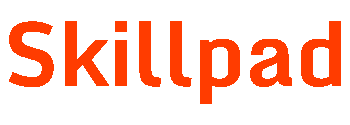“Your resume certainly plays a big part if you’re starting your job search. Think of your resume as a potential marketing tool to sell yourself”.
Remember your effort is worth it in investing and crafting a perfect CV. A good resume gets good results – it will increase your chance to interview in noticeable ways.
Here are the two parts to write your resume
Part – 1
What to include in your resume?
Your resume should be no longer than 2-3 pages long. If you are a student, you may not yet have a great deal of experience, so 1-2 pages are completely acceptable. Remember that truly great resumes are short and succinct – so be sure to follow our guidelines as to what to include and exclude in your resume. Here are the things you must include in your resume.
- Choose a resume format/layout (Refer to the description below)
- Add your name and contact information.
- Write a standout resume headline.
- Add your professional resume summary statement.
- Detail your work experience.
- List relevant skills and keywords.
- Add your education, certifications, and any other relevant information
- Accomplishments – If you have any notable work-related awards, list the most significant.
- Link to online portfolio (optional, include if relevant)
Part 2:
How to create the perfect resume layout?
- Keep it short- In fact, the more experience you have, the better you should be at articulating very succinctly why you are the best person for the job.
- Cover the basics– Ensure your document includes your name, up-to-date contact details, summary, qualifications, and work history.
- Follow Chronological order – List everything in chronological order, starting with your most recent role. Employers are usually most interested in your most recent work experience; however, they will scan the rest of your CV for other relevant experience. Their expectation will be that you will follow a reverse chronological order in your resume layout, and you must meet that expectation.
- Easy to read -Your resume format should be easy to read. This isn’t a time to experiment with unusual fonts or complex and colorful layouts. A clean, white background is best, and use a well-used font like Times New Roman or Arial.
- Tell (and sell) your story – Your CV should tell the story of your career. Your summary should carefully articulate your experience and skills. Think of it as the blurb where you are convincing the reader why they should invest more time in reading it.
- Have your resume proofread – If you can, ask a trusted friend to proofread your CV. If your CV has any spelling mistakes or grammatical errors, it can be a nail in your recruitment coffin, no matter how perfect your resume layout may be.
So, now you’re done writing a resume, start applying to your dream jobs. Check out new jobs now.




